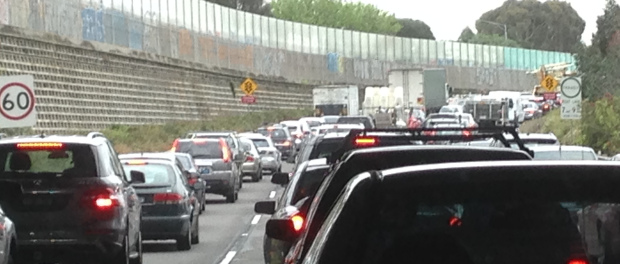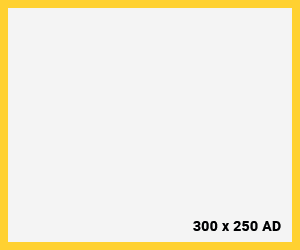Yes! The contracts for Stage One have been signed and the state is on track to build the vital infrastructure that is the East-West Link.
Look at the picture on the right. This is Alexandra Parade at 10am on a Thursday morning. Yes, 10am. Not even peak hour. We were on our way to the Melbourne Show, and a short trip from Doncaster to North Melbourne took more than an hour. That’s just 20km averaging 20Km/h, and with petrol averaging 140+ I didn’t particularly like the stop-brake-start drain.
Anyone who has driven on this road recently, or Flemington Road, or even Brunswick Street, would be well within their rights to lament the lost hours that they will never get back. At least radio show hosts are winning from the slow death experienced by commuters on a day to day basis.
Commuters will also be well aware of the nightmare that is the Eastern Freeway/Hoddle Street bottleneck. A simple trip to the city or to the MCG for a night at the footy becomes an exercise in patience and lane hopping. And good luck for anyone who needs to commute from East to West on a daily basis – yes, these people do exist, poor buggers.
Thankfully, the Napthine government has offered a solution. Regrettably and short sightedly, the Labor Party and the Greens have voted against progress and oppose the project.
This is beyond debate. The East-West Link is vital infrastructure for the future of Melbourne. Currently, our only cross city connections are the Monash, the West Gate Freeway, and Citylink – and none of them directly connect the Eastern Suburbs to the West or the North. That, and they are banked up until next week.
So what’s the solution? In case you’re not completely aware, what does the East-West Link propose to do? The map below demonstrates stage one at its most basic level:
There will be a tunnel that connects the Eastern Freeway to CityLink, as well as a new overpass ramp to ease congestion on Hoddle Street. Broken down into its two main features, it consists of:
- an 8 kilometre section linking the Eastern Freeway to the Tullamarine Freeway, with a connection to the Port of Melbourne; and
- a 10 kilometre section linking the Port of Melbourne to West Footscray and West Footscray to the Western Ring Road.
For people in the Eastern Suburbs and the Western Suburbs, the benefit is obvious – a clear, convenient arterial link from one side of the city to the other, providing greater access to more jobs and services.
It will also have the obvious benefit of reduced travel times, less congestion, and greater flexibility. It’s predicted that it will carry over 100,000 vehicles a day. This will not only provide economic benefits to the state, it will also improve the quality of life for people travelling to and from the city each day. Less congestion leads to more leisure, more time for family, and more work opportunities across the city. There’s even the environmental benefits that come from cars spending less time on the roads – which makes the Greens’ vehement opposition to the project even more ironic.
This leads me to the poor, unfortunate case of the Labor Party and their uninspiring leader, Daniel Andrews. Labor knows that it needs Green preferences to win the November election, and given the Greens’ opposition to the Link, Andrews knows that it would be politically risky to back the project and potentially lose the Left vote in the inner city.
You see, the majority of Greens voters live in the inner city, so it’s risky for the Labor Party to align with the Liberals when they’re battling for the votes of inner city progressives. Ah, politics. It’s all about the short term self interest without any eye to the state’s long term infrastructure needs.
They sure do live in a bubble, the inner city folk. They enjoy direct access by foot to an array of services. Fine restaurants, cafes, theatres, sports precincts – they’re just stone’s throw away. It’s no wonder then that their solution is better public transport as opposed to those pesky roads. Sure, we should always have efficient and productive public transport (hence the Napthine government’s support of the Metro Rail Tunnel), but we should never overlook the reality that a significant number of the state’s population are not latte sipping inner-city leftie folk riding their bicycles to the next John Butler Trio gig.
No, there’s the people out in the suburbs too, and these are the people who have no choice but to use cars to get from point A to point B. These are the people who need to travel to get to work, the people who are bearing the brunt of high petrol costs and reduced family time thanks to the bottle necks and congestion that is Melbourne’s outdated road network. This is the reality the folk from Brunswick and Richmond don’t see.
If you oppose the East-West Link, you sit on the wrong side of history, like the fools who opposed the Eastern Freeway before you. Melbourne and the outer suburbs’ populations are rising in unprecedented numbers. Apartment blocks are popping up throughout the East as an alternative to urban sprawl, and the West and the North are developing regions destined to balloon in numbers over the next thirty years. Jobs inevitably will be created in growth areas, and this will necessitate the need for mobility.
If the answer to this issue is ONLY better transport services for the inner city, then lord help us!





